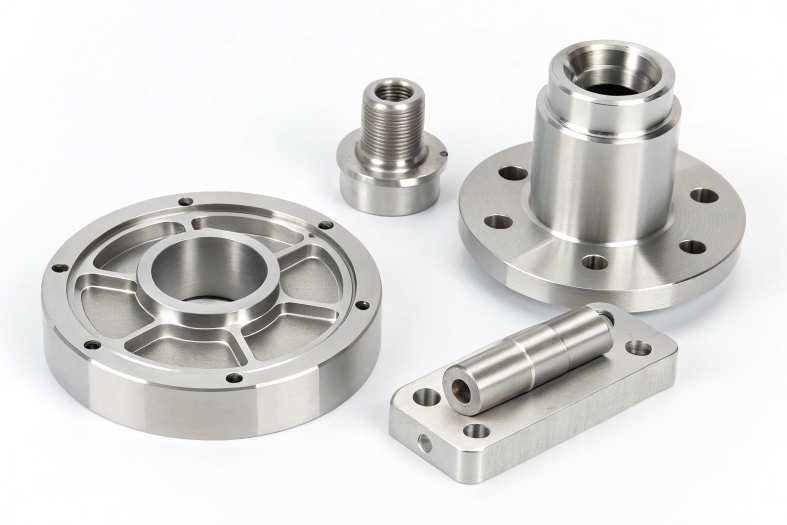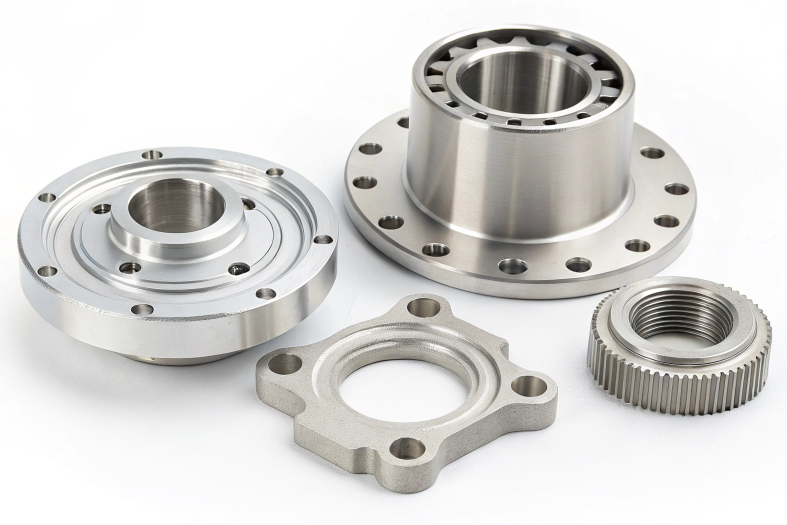Choosing the correct milling technique is crucial for achieving desired surface finishes and tool life in CNC machining. Many machinists struggle to decide between forward milling and reverse milling, which can lead to poor-quality parts, increased tool wear, and inefficiencies. By understanding the key differences between these two methods, you can optimize your machining process for precision and cost-effectiveness.
Direct Answer:
Forward milling (climb milling) moves the cutter in the feed direction, ensuring smooth cuts. Reverse milling (conventional milling) moves against the feed, leading to more resistance but increased rigidity.

What is Forward Milling?
Definition
In forward milling, the cutting tool rotates in the same direction as the feed motion of the workpiece. This process causes the cutter to "climb" into the material, starting with a thick chip and reducing it to the thinnest section.
Working Principles
- Chip Formation: In forward milling, the chip thickness decreases from thick to thin. This minimizes friction between the cutting edge and the workpiece after the material is cut, improving tool life.
- Cutting Forces: Cutting forces are directed downward, pressing the workpiece against the table. This reduces vibration and improves dimensional accuracy.
- Tool-Workpiece Interaction: As the tool engages the workpiece, it immediately experiences the maximum cutting load, which requires high machine rigidity to prevent chatter.
Advantages
- Improved Surface Finish: The reduced friction and vibration lead to smoother finishes, particularly on softer materials.
- Tool Stability: The downward force minimizes tool deflection, enhancing precision in operations requiring tight tolerances.
- Higher Feed Rates: Forward milling supports faster feed rates, increasing productivity in specific scenarios.
Disadvantages
- Chip Adhesion: Heat and pressure may cause chips to weld to the cutting edge, particularly in ductile materials.
- Power Consumption: Higher initial cutting forces demand more machine power, which can be a limitation for smaller CNC setups.
What is Reverse Milling?
Definition
Reverse milling involves the cutting tool rotating against the direction of the feed motion. This method removes material starting from the thinnest chip and progressing to the thickest.
Working Principles
- Chip Formation: The chip thickness increases from thin to thick, resulting in a gradual cutting load on the tool.
- Cutting Forces: Forces are directed upward, which can lift the workpiece if it’s not securely clamped.
- Tool Engagement: The cutting edge first engages the material gently, reducing initial stress on the tool.
Advantages
- Lower Heat Generation: The gradual engagement of the tool reduces friction, keeping cutting temperatures lower.
- Durability in Hard Materials: Reverse milling is better suited for machining tougher materials like titanium or hardened steel.
- Roughing Efficiency: It excels in roughing operations where high material removal rates are prioritized over surface finish.
Disadvantages
- Rough Surface Finish: The upward cutting forces can cause vibration and tool deflection, leading to less refined finishes.
- Higher Tool Deflection: The opposing forces may shift the tool slightly, reducing accuracy.

Key Technical Differences Between Forward Milling and Reverse Milling
| Technical Aspect | Forward Milling | Reverse Milling |
|---|---|---|
| Chip Thickness Profile | Thick to thin | Thin to thick |
| Heat Management | Higher heat due to chip compression | Lower heat due to gradual chip removal |
| Cutting Edge Stress | Higher initial stress on the cutting edge | Lower stress due to gradual engagement |
| Force Direction | Downward force stabilizes the workpiece | Upward force increases clamping demands |
| Surface Finish | Smoother, ideal for finishing | Rougher, suitable for roughing |
| Material Suitability | Soft to medium hardness materials | Hard and tough materials |
When to Use Forward Milling vs Reverse Milling?
Application Scenarios
- Forward Milling: Preferred for finishing tasks, thin-walled components, and operations requiring high precision and smooth surface quality.
- Reverse Milling: Best for initial roughing, machining harder materials, and high-volume stock removal.
Material Considerations
- Soft Materials (Aluminum, Plastics): Forward milling is typically superior for achieving a clean surface finish.
- Hard Materials (Steel, Inconel): Reverse milling prolongs tool life and prevents excessive heat buildup.
Machine and Tooling Setup
- Forward milling demands:
- High Rigidity: To handle the aggressive engagement of the cutting tool.
- Accurate Clamping: To stabilize the workpiece and prevent shifting.
- Reverse milling requires:
- Secure Clamping: To counteract upward forces.
- Tool Toughness: To endure gradual chip thickening and heat resistance.
Advanced Technical Insights
Cutting Geometry and Chip Load
- In forward milling, the cutting edge slices through the material with maximum force at entry, creating chips that evacuate cleanly. However, any backlash in the feed system can degrade accuracy.
- In reverse milling, the cutting edge gradually engages the material, resulting in reduced shock loads. This method also reduces tool vibration but may lead to chip clogging if the feed rate is too high.
Heat and Tool Wear Dynamics
- Forward milling generates more heat near the cutting edge, which can soften tool material if not properly cooled.
- Reverse milling distributes heat more evenly, reducing the risk of thermal damage to the tool but increasing wear due to friction during chip formation.
Common Problems and Solutions in Milling
-
Tool Chatter:
- Cause: Insufficient rigidity in forward milling or excessive feed in reverse milling.
- Solution: Use tools with high stiffness and adjust feed rates.
-
Poor Chip Evacuation:
- Cause: Chips remain trapped in the cutting zone.
- Solution: Optimize coolant flow and increase chip clearance angles.
-
Surface Imperfections:
- Cause: Tool deflection or vibration.
- Solution: Stabilize the workpiece, use sharp tools, and optimize cutting parameters.

Conclusion
Choosing between forward milling and reverse milling depends on the material, machining objectives, and equipment capabilities. Forward milling offers superior finishes and precision but demands robust machinery. Reverse milling excels in durability and roughing operations, particularly for hard materials. By understanding the technical nuances of each method, manufacturers can optimize their processes for maximum efficiency and quality.
FAQ:
What is the most preferable milling technique?
The most preferable technique depends on the application:
- Down Milling (Forward Milling): Best for achieving smoother surface finishes, reduced vibration, and higher feed rates, especially in precision machining.
- Up Milling (Reverse Milling): Ideal for roughing harder materials and heavy material removal.
In general, down milling is preferred for its efficiency and high-quality results.
What are the three basic types of milling machines?
- Horizontal Milling Machines: Feature a horizontally oriented spindle, suitable for heavy-duty and large-scale cutting.
- Vertical Milling Machines: Feature a vertically oriented spindle, commonly used for versatile and precise applications.
- Universal Milling Machines: Offer both horizontal and vertical spindle configurations, providing flexibility for complex machining needs.
Which is better, up milling or down milling?
- Down Milling (Climb Milling): Better for smoother finishes, less tool wear, and improved efficiency. Ideal for most modern applications.
- Up Milling (Conventional Milling): Better for machining tougher materials and roughing operations but causes higher tool wear and rougher surfaces.
Down milling is generally superior in most scenarios.
What is the best direction for milling?
The best direction is usually down milling, where the cutter rotates in the same direction as the feed motion. This approach minimizes vibrations, produces better surface finishes, and improves tool life. However, the specific direction depends on the material, tooling, and machining setup.


